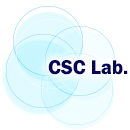Label-free specific detection and collection of C-reactive protein using zwitterionic phosphorylcholine-polymer-protected magnetic nanoparticles
Sana Iwasaki, Hideya Kawasaki, and Yasuhiko Iwasaki*
Langmuir, DOI: 10.1021/acs.langmuir.8b01007
In this study, poly[2-methacryloyloxyethyl phosphorylcholine (MPC)]-protected Fe3O4 nanoparticles were prepared and used for the label-free specific detection and collection of an acute inflammation marker, C-reactive protein (CRP), in a simulated body fluid. The Fe3O4 nanoparticle surface was modified using poly(MPC) by surface-initiated atom transfer radical polymerization. The density of poly(MPC) was 0.16 chains/nm2, and the colloidal stability of the nanoparticles in aqueous media and human plasma was effectively improved by surface modification. The size of the as-prepared poly(MPC)-protected Fe3O4 nanoparticles was ~200 nm. After coming into contact with CRP, the nanoparticles aggregated as CRP comprises five subunits, and each subunit can bind to a phosphorylcholine group with two free Ca2+ ions. The change in the nanoparticle size exhibited a good correlation with the CRP concentration in the range of 0-600 nM. A low limit of detection of 10 nM for CRP was observed. The particles effectively reduced the adsorption of nonspecific proteins, and the change in the nanoparticle size with CRP was not affected by the coexistence of bovine serum albumin at a concentration 1000 times greater than that of CRP. Nanoparticle aggregates formed using CRP were dissociated using ethylenediamine-N,N,N′,N′-tetraacetic acid, disodium salt, thereby regenerating poly(MPC)-protected Fe3O4 nanoparticles. In addition, CRP was collected from aqueous media using an acidic buffer solution and human plasma. CRP-containing aqueous solutions were treated with poly(MPC)-protected Fe3O4. After separating poly(MPC)-protected Fe3O4 using a neodymium magnet and centrifugation, the concentration of CRP in the media dramatically decreased. In stark contrast, the concentration of albumin present in the test solution did not change even after treatment with the nanoparticles. Therefore, nanoparticles specifically recognize CRP from complex biological fluids. Although inhibition tests with the presence of 1,2-dioleoyl-sn-glycero-3-phosphocholine liposomes or free poly(MPC) were also carried out, the binding of poly(MPC)-protected Fe3O4 to CRP was not affected by these inhibitors. In conclusion, poly(MPC)-brush-bearing magnetic nanoparticles can serve not only as reliable materials for detecting and controlling the levels of CRP in simulated body fluids but also as diagnostic and therapeutic materials.
